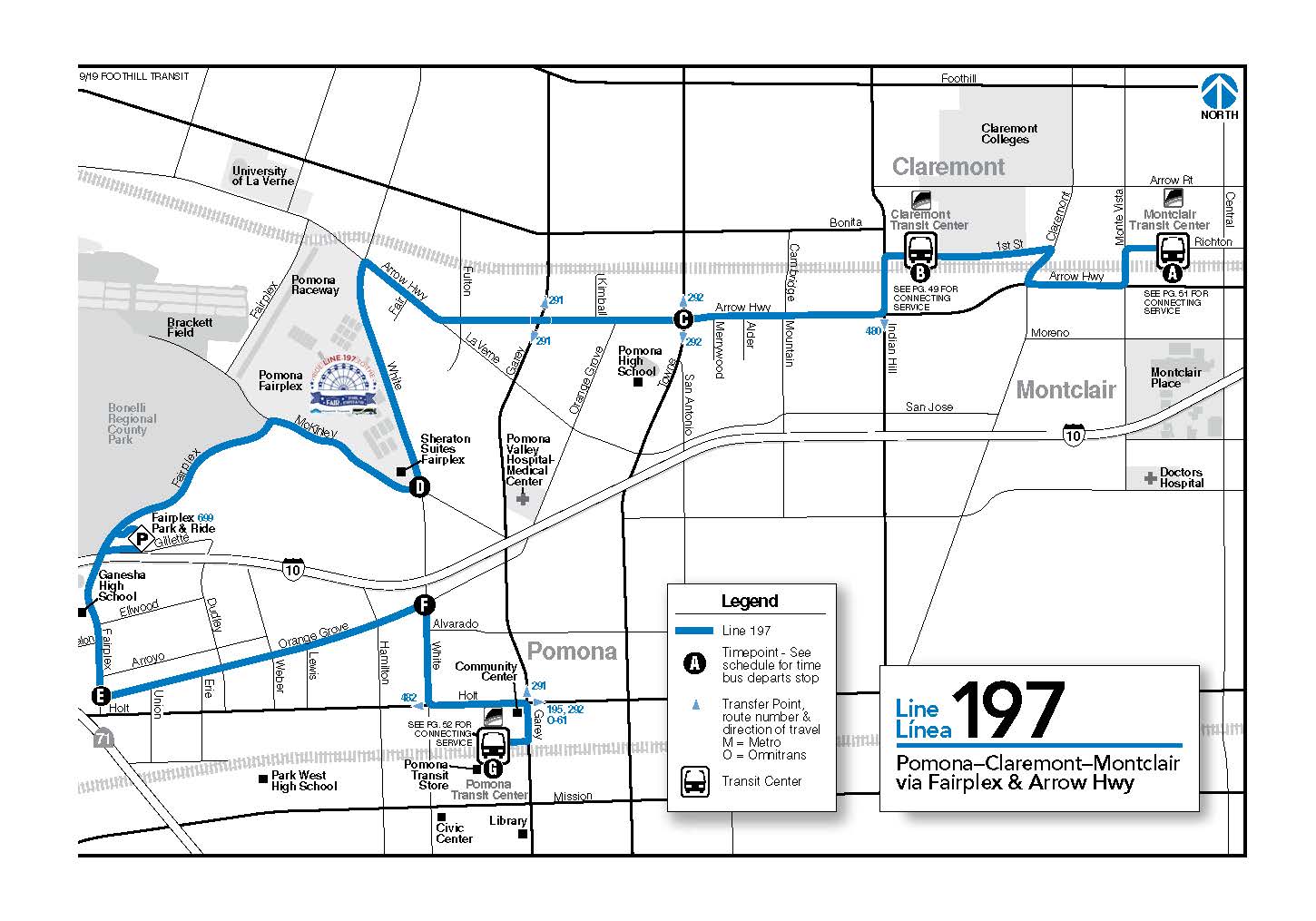Rent Stabilization and the Integrity of Vulnerable Ecosystems: Some Last Thoughts on Prop 10
10:03 AM PST on November 6, 2018
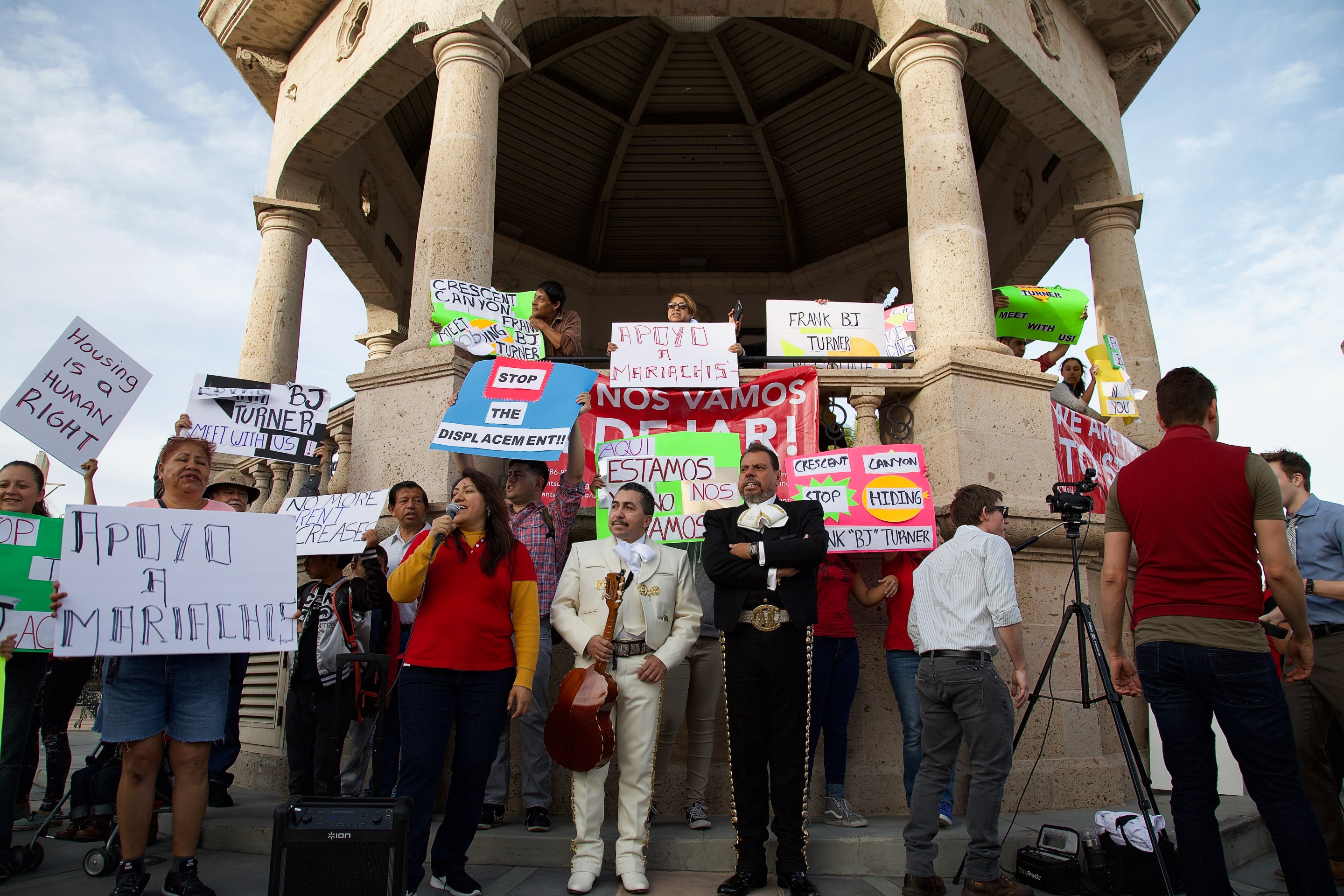
Mariachi musician Luis Valdivia (white suit, center) waits to address the crowd regarding an $800 rent increase he was hit with at a rally at Mariachi Plaza in April, 2017. He stands next to Arturo Ramírez, president of the Organización de Mariachis Unidos de Los Ángeles. Sahra Sulaiman/Streetsblog L.A.
Within a few weeks of buying the building located a block from Mariachi Plaza in Boyle Heights at the end of 2016, Frank "B.J." Turner had raised rents on a handful of long-term tenants by between 60 and 80 percent. He had also created a website for the building, re-christened “Mariachi Crossing,” targeting those that wanted a taste of a “vibrant” neighborhood and a Metro station within walking distance that could take them to experience the excitement found Downtown. [The website has since been removed. The Craigslist ad with many of the same images and text is here.]
At the time, the new owners justified the hikes - made possible by the fact that building had been built in 1983 and therefore was not subject to rent control protections - by claiming to be making significant upgrades to the communal elements of the property (laundry facilities, lighting, roofing, etc.). Tenants pushed back, saying that the owners had first told them they were going to upgrade the units to make them more luxurious, but then made only a few cosmetic improvements around the edges of the building, leaving tenants’ long-standing issues and repairs unresolved.
To the tenants of 1815 E. 2nd Street, the targeting of only seven of twenty-five units for increases meant Turner was testing out both his ability to push people out and the strength of tenant relationships.
To the larger Boyle Heights community, the targeting of mariachis for rent increases as high as $800 while using the mariachi name and proximity to the plaza as a rebranding tool was part of something far bigger and far more insidious - a privately-driven "urban renewal" effort aimed at erasing the Latinx community from the landscape altogether.

That these processes of erasure unfold over time and are difficult to quantify are two of the many reasons that they tend not to be the kind of thing we talk about when we talk about rent control.
Instead, urbanists, planners, yimbys, economists, real estate investors, and developers have preferred to debate the finer points of supply and demand, the virtues of vouchers, and the disincentives more regulation can cause for developers while reiterating that rent control will not fix the housing crisis - a claim few, if any, rent control supporters have actually made.
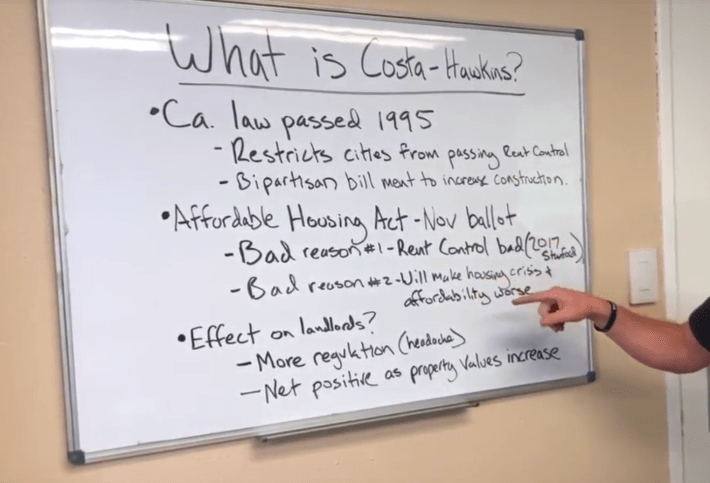
I will not enter that fray here. [For a much better primer than I could have ever offered anyways, please see the op-ed in the L.A. Times by Michael Hiltzik on why repealing Costa Hawkins, while in no way a panacea, returns a valuable planning tool to local municipalities while offering severely rent-burdened tenants the promise of some stability and a modicum of power in the nearer, rather than far, future.]
Instead, as people consider repealing Costa Hawkins by voting in favor of Proposition 10 at the polls today, I'd rather they take a moment to think about what rent stabilization can mean for the stability of a community and why it matters.
The legacy of redlining in L.A. is that few in communities like Boyle Heights have much in the way of assets or savings to fall back on. And where so many work in the informal sector and are reliant on unstable incomes, even after doubling up in their apartments, taking on extra work, or sending their kids to school with candy or tortas to sell, families can regularly come up short at the end of the month. Having a support network of neighbors, friends, coworkers, or family within close proximity who can help with rent, food, bills, child care, medical expenses, a ride, or credit at a shop is key to survival.
When neighbors and local businesses begin to disappear, that ecosystem is disrupted - the support structure begins to crumble. With fewer places to turn for mutual assistance and costs rising all around them, remaining residents become even more vulnerable to displacement.
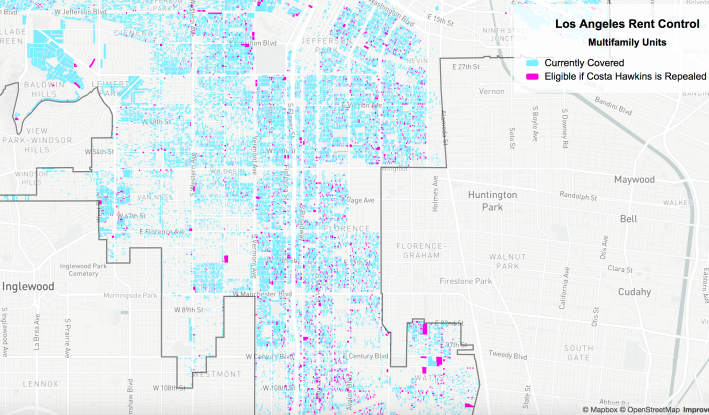
The mariachis' plight offers perhaps one of the clearest windows into the damage this process had the potential to do.
Mariachis had played an important role in uplifting the Boyle Heights community over the decades the city had denied it basic dignity. Having informally claimed the intersection at 1st and Boyle as a gathering space as early as the 1930s, they had essentially watched the community grow up around them. When the corner became a hub for less reputable endeavors in the 1980s and the city turned a blind eye to the community's desperation, the presence of the mariachis helped to keep the space accessible to residents and kept local businesses like the donut shop they used as their de facto headquarters afloat. So much so that the transformation of what had been a traffic triangle into a bonafide plaza in 1994 – imperfect a process as it may have been – was predicated on the idea that elevating the mariachis would also elevate and heal the community.
In the intervening years, the options open to mariachis hoping to remain near the plaza have narrowed. Rents around the plaza have risen while property owners appear willing to resort to ever more creative ways to intimidate tenants into leaving voluntarily. Even the subsidized units at the renovated Boyle Hotel - once a flop-house-type home for mariachis - ended up being out of reach for some, forcing them to seek alternative solutions. Another flop-house-type arrangement nearby - where a number of men shared a room in order to be within easy reach of the plaza - had allowed some of the single men to stay in the area and keep working as mariachis. But concerns that they might also have to leave (due to code violations) left many fearful that their next move was out of the community altogether.
The longtime residents at 1815 E. 2nd Street were in the same boat. Unable to afford an $800-a-month increase, mariachi Luis Valdivia (pictured at top and in the video below, performing after a protest) wondered how he would survive. If he moved away, he would be unable to get to the plaza on short notice for a gig. Not only would he lose his own livelihood, he would jeopardize the ability of his fellow bandmates to maintain theirs.
That is devastating enough on its own.
But it is compounded by the fact that the mariachi tradition is often passed down within families. Many also give lessons to area music students. They patronize (and sustain) unique community-serving shops and region-specific restaurants with a long history in the area. And they provide a soundtrack for some of the most important moments of area residents’ lives.
In other words, the sustainability of the larger cultural community is tied to its economic viability, which is tied to its social network, all of which is inextricably tied to presence and place.
Because of how extensive redlining was in L.A. and how effectively highway construction, disinvestment, and the LAPD helped maintain those borders around communities, this kind of scenario is far more prevalent than one might think. While not all ecosystems are as obvious as those sustaining the mariachis, artists and cultural leaders in Leimert Park, or street vendors in areas like MacArthur Park, they are everywhere in disenfranchised communities of color, and lower-income communities more generally, filling in the gaps that the city and investors refused to.
Which is why the ability to expand rent control in a city that already has a rent stabilization ordinance matters. Not to put a ceiling on what developers can do (although that is important, too, especially where private equity giants like Blackstone are concerned), but to put a floor under vulnerable ecosystems as we work to find solutions to the current housing shortage.
The tenants at 1815 E. 2nd Street - with the help of the Los Angeles Tenants Union, the Democratic Socialists, Defend Boyle Heights, Unión de Vecinos, and mariachis and local advocates - were able to confront Turner and win concessions because he was a relatively small investor. Yet, even getting him to hear their voices entailed months of organizing, protesting, and occasionally camping out in front of his home. All while the tenants battled intense panic over the possibility that they could lose absolutely everything if their gamble didn't pay off.
As large investors continue to buy up foreclosed homes, tear them down, and convert them into rental properties free from rent control restrictions, the ability of a vulnerable community to exert its rights, or any kind of power, continues to diminish.
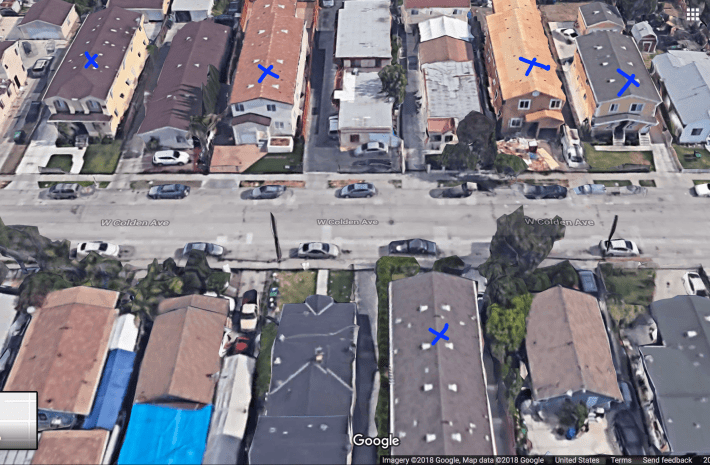
Over the past several years, Ocean Development, Inc. - which builds exclusively south of the 10 freeway - has converted over 1000 such properties to multifamily duplexes. It's not unusual to see as many as four or five of their distinctive bland and boxy structures on a single block. They provide a service now - they offer larger four- and five-bedroom units and often accept Section 8 vouchers in a climate where that is increasingly rare. But even on their website, their primary pitch to investors involves framing South L.A. as a kind of suburb of downtown where their tear-down/new construction model limits investors' exposure to rent control. And their clout, like that of Blackstone and other big investors, skews the market in their favor, making it more difficult for existing residents to compete for access to those properties.
Invitation Homes, a subsidiary of Blackstone - a firm that has dumped millions into the No on Prop 10 campaign - has snapped up over 3,000 properties in L.A. county alone, a sizable chunk of which are also formerly foreclosed properties on the eastside of South L.A. (below). And as the largest real estate manager in the world, it loses zero sleep over rampant complaints of toxic mold, leaks, and black widow spider infestations in its structures, illegal fees levied against tenants, or evictions for non-compliance with excessively strict leases. Nor does it sweat using workers' and retirees' pension funds to fight against Prop 10 - a measure many of those people actually support, apparently.
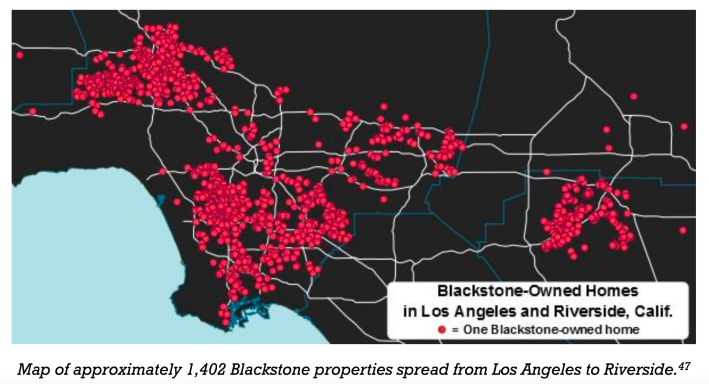
Repealing Costa Hawkins won't solve this, nor will it enact rent control and offer tenants immediate relief. Nor would it be likely that we would see rent control enacted on new construction - meaning many of the properties mentioned above would continue to remain exempt for some time.
What it will do is finally make it possible for Los Angeles to have a conversation about what a reasonable rent control policy would look like and when controls should kick in so we can help protect vulnerable communities against exploitation down the line.
It's a conversation we need to have.
Because so many of the people that fought against so many barriers for so many years just to have a place in this city are losing their foothold. We, as a city, lose so much of our richness when those communities unravel.
If the demoralizing battles over where to site affordable housing or housing for the homeless have taught us anything, it's that we can't recreate those communities once they're gone.
Let's work to keep people in their homes.
Sahra is Communities Editor for Streetsblog L.A., covering the intersection of mobility with race, class, history, representation, policing, housing, health, culture, community, and access to the public space in Boyle Heights and South Central Los Angeles.
Stay in touch
Sign up for our free newsletter
More from Streetsblog Los Angeles
No, L.A. City Does Not Always Add Required ADA Ramps During Resurfacing, But They Should
StreetsLA GM Keith Mozee "Any time we do street resurfacing, it is considered an alteration, which requires ADA ramps to be installed."
LAPD Was Crossing Against Red Light in Crash that Killed Pedestrian and Injured Six in Hollywood
The department says the officers had turned on their lights and sirens just before crossing, but won't say why they did so.

